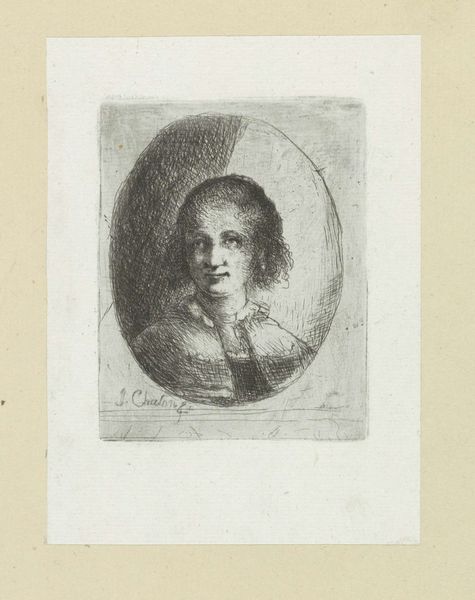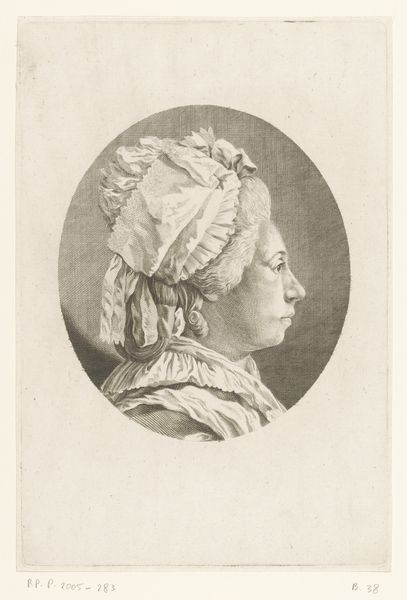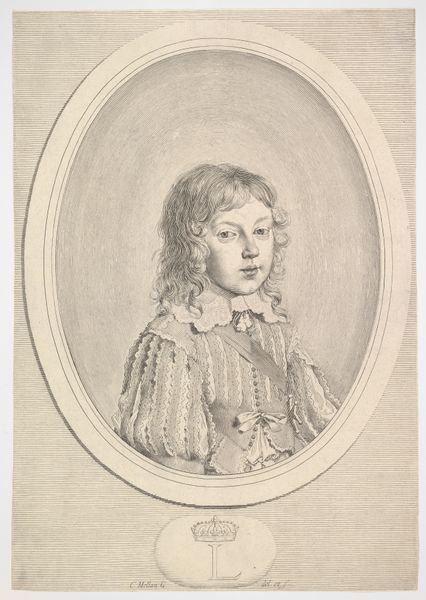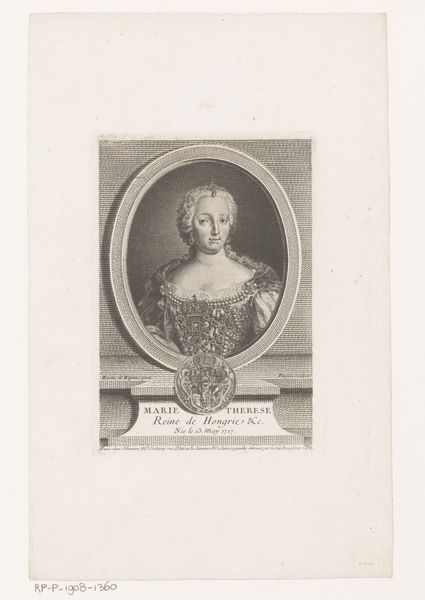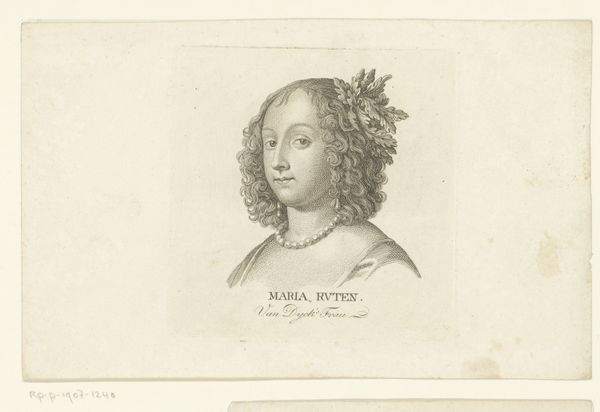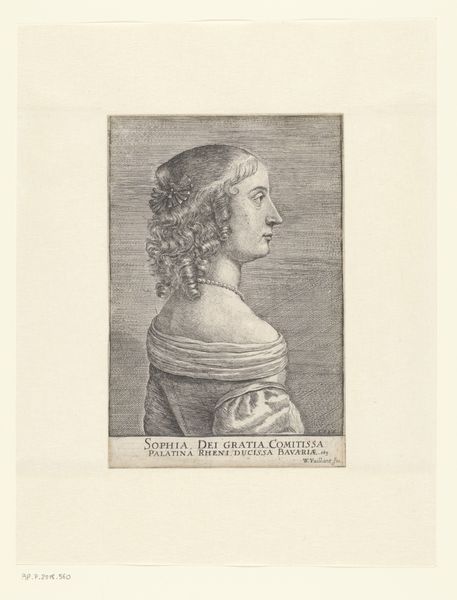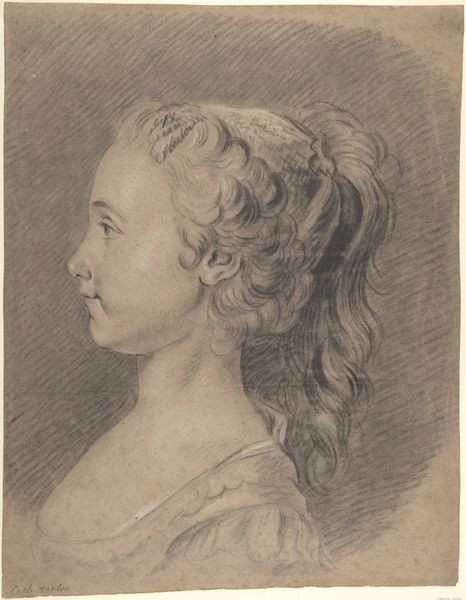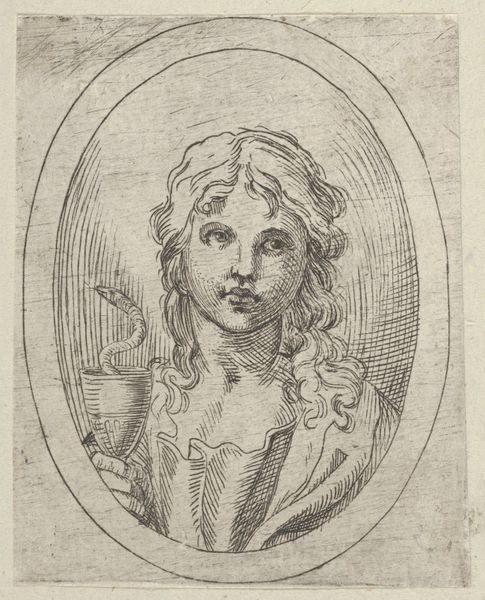
Henriette-Anne d'Angleterre, duchesse d'Orléans 1644 - 1670
0:00
0:00
drawing, print, engraving
#
portrait
#
drawing
#
baroque
# print
#
pencil drawing
#
engraving
Dimensions: sheet: 8 1/2 x 6 3/8 in. (21.6 x 16.2 cm)
Copyright: Public Domain
Curator: Let’s examine this engraving of Henriette-Anne d'Angleterre, Duchess of Orléans. It’s a piece by Claude Mellan, dating roughly to 1644-1670. What’s your initial impression? Editor: There's a certain coldness to it, even with the baroque curls and pearls. The monochrome palette amplifies the detached, almost severe feel, as though her essence has been captured but her vitality remains elusive. Curator: Interesting. Mellan’s engravings often functioned as promotional pieces, weren’t they? Part of image construction, political capital. How do you feel that ties into that perceived "coldness"? Editor: It speaks volumes. The symbols chosen – the pearls representing purity, her elaborately coiffed hair indicative of status – these aren't merely decorative. It is about projecting an idea of the duchess. The bust format itself suggests enduring authority, reminiscent of classical sculptures. Curator: Exactly, and it emphasizes that controlled, curated image. The engraver likely worked under patronage, subtly shaping how she was perceived. How do you think such imagery impacted the reception of aristocratic women? Editor: Powerfully. Visual rhetoric like this becomes ingrained. The audience sees "Duchess," not Henrietta. Symbols solidify narratives about their role: vessels of lineage, ornaments of court, political pawns. Look at the formality implied by the smooth marble contrasting her more fluid, 'lively' hairstyle. There's inherent tension in how women are represented and how much agency they can truly wield. Curator: Well said! These portraits solidified those very restricted ideas, becoming self-perpetuating images which helped structure how these royal women were perceived. They performed more than visual admiration, these images enforced hierarchies of class and gender. Editor: This reinforces just how carefully such representations needed to be crafted, perpetuating myths as much as recording realities. Curator: Indeed. I suppose the art's public function is a primary concern here. It showcases that while technique is one layer, it's crucial to acknowledge historical and social impact, how they have defined social norms for centuries. Editor: Absolutely. The way symbols are used dictates much about its cultural impact, it both reflects and shapes culture over time.
Comments
No comments
Be the first to comment and join the conversation on the ultimate creative platform.



